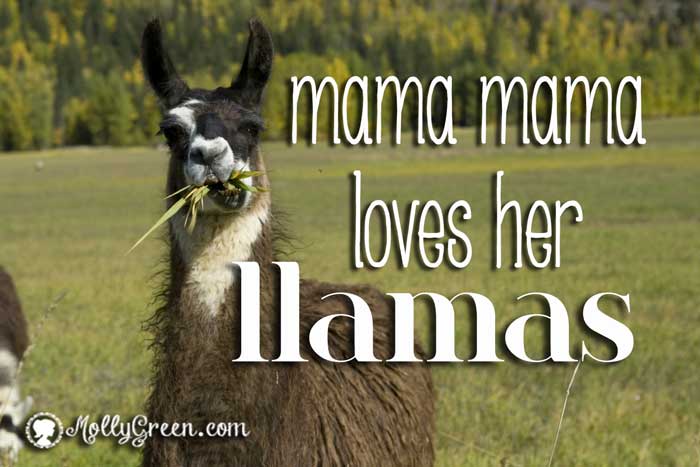By Betsy Chastain
Having llamas or alpacas may not be a city thing, but you certainly can have them on small rural acreage! The general rule for camelids is six animals per acre maximum. So if you have 1/2 acre of land you could have a couple of llamas! A good thing to remember is that llamas are herd creatures … they need companions. You will need to have at least two llamas so they will be happy. Otherwise they may consider you a herd mate and that’s where you’ll run into aggressive behavior and spitting on humans. Normally llamas and alpacas only spit at each other when they feel threatened. If they consider you a herd mate, watch out! We’ve had llamas for three years now and have never been spat upon, even after nail trimming, giving shots and medicines, taking out stitches or shearing.
Llamas and alpacas eat the grass in your pasture. They will eat hay and there is llama feed you can purchase, but if they have enough grass, then clean water is all you need to provide. They use a communal dung pile which means they normally go to the pile in the yard to do their business. This makes for easy clean up. The llamas’ beans—as their waste is called—don’t smell offensive. It has an earthy, musty smell and is not unpleasant at all. The llamas require nail clipping every couple of months with vaccinations and shearing yearly.

You will need to clean the cut fiber before selling or using it. I use small zippered bags made for fine washables and stuff them with fiber before gently cleaning that in warm water several times and hanging it out to dry. You can find many websites and videos on cleaning fiber. If you would like to spin your fiber into yarn, then you’ll need to card your fiber to get all of the fibers in a straight line and to help get out more of the vegetable matter that could still be stuck in the fiber.
You can also sell the clean fiber or send it to a mill to be carded and spun into yarn. Using a mill is costly, so learning to spin your own fiber into yarn is the best way to go. Then you could knit or crochet things and sell those too!

Our farm does require plenty of work, but it’s also relaxing. Read more about our hobby farm in the article “Serenity on the Hobby Farm” in the August 2012 digital issue of The Old Schoolhouse® Magazine. General hobby farm information and many great ideas can also be found at www.hobbyfarms.com. If you are considering a hobby farm, remember it doesn’t matter what size yard you have—it’s what you do with the space you’re given!
Betsy, and her husband, Tyson, have been blessed with the task of raising three gentlemen for the army of the Lord. They live on a hobby farm in the foothills of the Smoky Mountains and have been homeschooling for twenty years. Read more about their hobby farm at
https://sites.google.com/site/starburstacres/.






